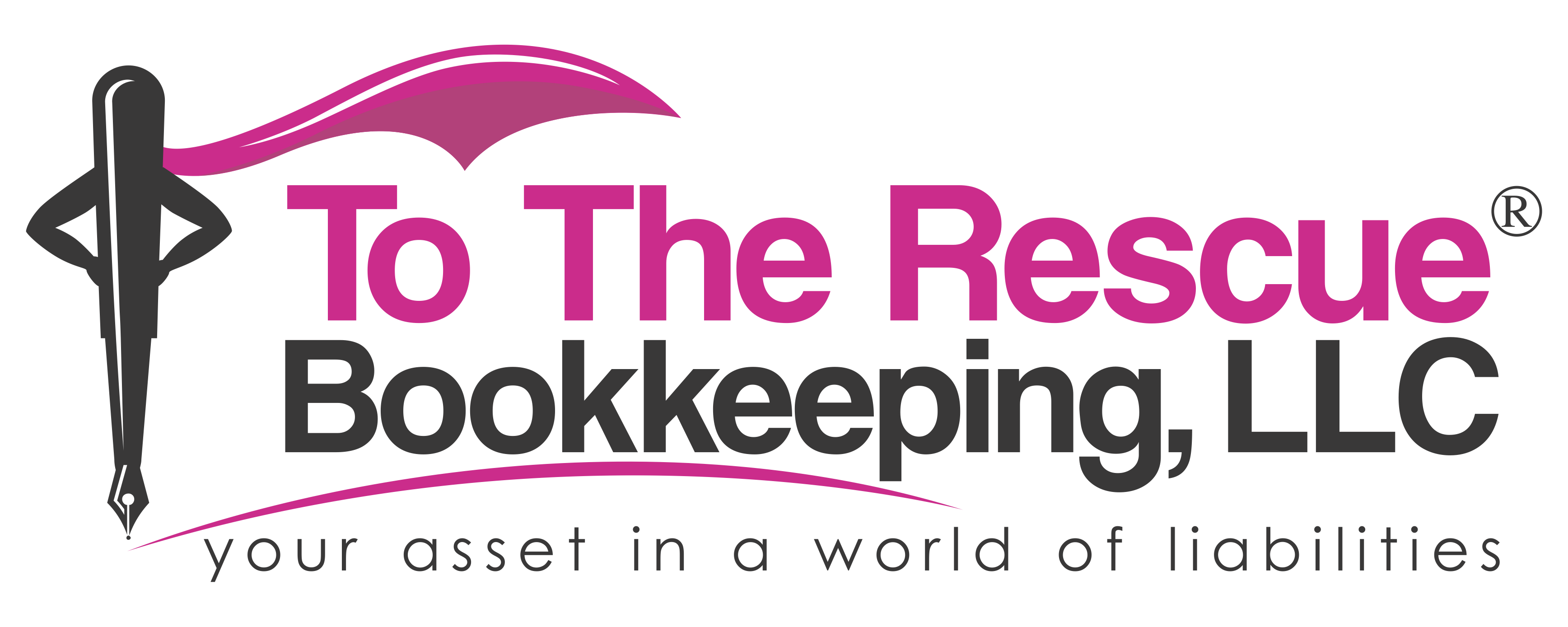WE'RE HERE TO HELP
Frequently Asked Questions
You may have discovered that by owning your own business, you are spending hours upon hours trying to keep track of the accounting paper trail, instead of doing what you enjoy. Wouldn’t you rather use your strengths and skill set to build your business, instead of worrying about accounting issues? Outsourcing your company’s bookkeeping to a certified bookkeeper, can save you staffing overhead, operating costs, and management time, in turn freeing up essential capital and increasing your capabilities so you can run your business more efficiently. With a certified bookkeeper on your side like To The Rescue, your business can be more profitable, more efficient, and more competitive! You’ll also receive accurate reports reflecting your business activities so you can make decisions that will keep your business moving forward.
The data we hold is very valuable, not only to you, but to us as well. We promise to take the security of your data seriously, and we take the steps necessary to ensure its safety. Therefore we employ many of the same security standards as some of the largest companies in the world. You can rest easy knowing that your data is safe with us.
- We store all our non-QuickBooks data on a secure server. We store your files in secure, SSAE 16 audited datacenters. Our privately managed server farm is equipped with the latest firewalls and Internet security updates to help keep your data completely safe, and physical security measures protect against theft and natural disaster.
- All of our QuickBooks data is stored securely and safely with backups that are encrypted. Not only is it encrypted, but it is only accessed by authorized employees who hold personal passwords and log ins, and all this activity is logged and tracked.
We use a variety of software to include: Intuit QuickBooks Accountant, Intuit QuickBooks Point of Sale, Intuit QuickBooks Enterprise Solutions Accountant, Intuit Quickbooks for Mac. We offer QuickBooks Online and for Windows as well.
what does it all mean?
Glossary
The I.R.S. form for reporting the payment of interest, dividends and miscellaneous fees to individuals.
An accounting period is the time it takes to complete an accounting cycle. You record and report business transactions and turn them into financial statements.
The length of time for an accounting period is normally one year, which means you gather all of your transactions and reconcile them with your bank statements for that year. Although, each business can determine its own accounting period.
Refers to the money that you currently owe vendors or suppliers. In other words, your short-term, unpaid bills for which you’ve already been charged.
You record on your balance sheet the amount that you haven’t paid yet to vendors and suppliers. Accounts payable is categorized as a liability because it’s technically debt.
Accounts receivable refers to the money that you haven’t received yet from your customers for either your product or service (think of unpaid invoices). Accounts receivable still counts as money your business has earned since the customer will have to pay their bill.
In the traditional accounting process, you would credit your accounts receivable with the amount owed by the customer (Invoice). Once the customer paid, you would debit the amount and move to your cash accounts.
Record revenue and expenses at the time they occur, not the time they are received or paid.
Assets refers to the items — tangible or intangible — that your business owns and that could be turned into cash. These items might be property, vehicles, the cash you have, etc.
A balance sheet is a financial statement that reports a company’s assets, liabilities, and shareholder equity. The balance sheet is one of the three core financial statements that are used to evaluate a business. It provides a snapshot of a company’s finances (what it owns and owes) as of the date of publication.
The process you complete at the end of an accounting period to match your bank statement with your transaction history in your accounting software. A bank reconciliation is an activity that checks and explains the difference between the cash balance in your bank account and the balance on your bank statements.
The profit or loss on the sale or disposition of most property.
Record revenue and expenses at the time they are received and or paid, not the time they occur.
A financial statement that sums up the amount of cash that enters and leaves an organization. The cash flow report is one of the three core financial statements that are used to evaluate a business.
The hub of your accounting software. A chart of accounts shows how you categorize your revenue transactions and how you categorize your expense transactions.
A chart of accounts makes sure that your transactions are categorized effectively so you can produce a profit-and-loss statement.
Your expenses that are directly related to producing your income/revenue. The cost of goods sold qualifies as an expense (traditionally the largest for your business) and is included on your profit-and-loss statement. When you subtract your cost of goods sold from your net sales, you get your gross profit.
Write-offs you are permitted to subtract from your gross income to calculate your taxable income. All taxpayers may claim a standard deduction, which is determined by the IRS. If your qualifying expenses exceed your standard deduction, you may claim the higher amount by itemizing your deductions. Although no records are needed to back up your right to the standard deduction, you must maintain records of qualifying expenditures if you itemize. For higher income taxpayers, the amount of their otherwise allowable itemized deductions will be reduced when adjusted gross income (AGI) exceeds a threshold amount. The reduction and threshold amounts can vary each year.
The amount a taxpayer expects to owe in taxes after withholding. Installments must be paid quarterly to the I.R.S.
You can claim a personal exemption for yourself. On joint returns, a personal exemption is claimed for each spouse. You also get an exemption for each dependent you claim on your return. Each exemption reduces taxable income by a standard amount, which is partially phased out at higher income levels.
If you use part of your home regularly and exclusively as the principal place of your business or the place you meet with clients, patients or customers, you can qualify to deduct certain expenses that are otherwise nondeductible personal expenses. Examples include a portion of your utilities, homeowner’s insurance premiums and depreciation (if you own your home) or part of your rent (if you are a renter).
Your liabilities are items such as unpaid invoices, balances on your credit cards, and your business loans. Liabilities traditionally go onto your balance sheet with your assets and equities.
Net income (NI), also called net earnings, is calculated as sales minus cost of goods sold, selling, general and administrative expenses, operating expenses, depreciation, interest, taxes, and other expenses. … This number appears on a company’s income statement and is also an indicator of a company’s profitability
Payroll refers to a list of your employees and how much you pay each one. For example, maybe you have 10 employees on your payroll. It requires calculating your employees’ compensation, as well as tax and retirement contributions.
This report shows you your income/revenue and expenses that have occurred in a certain time period. This report should not include assets purchased or liabilities paid. Profit and Loss is one of the three core financial statements that are used to evaluate a business.
A 100% offset against tax liability; a deduction provides a tax benefit equal only to the individual’s tax rate times the deducted amount.
The figure used to compute taxes before credits. Adjusted gross income reduced by personal exemptions and either reduced further by excess itemized deductions or in some unusual cases, increased by any unused zero bracket amount.
A vendor is a general term used to describe any supplier of goods or services.
You can ask the Social Security Administration to withhold taxes from your Social Security benefits. This could make sense if withholding allows you to avoid making quarterly estimated tax payments. To request voluntary withholding, file form W-4V with Social Security. You can also ask a retirement plan sponsor to withhold from payouts from IRA distributions.
The amount held back from your wages each payday to pay your income and Social Security taxes for the year. The amount withheld is based on the size of your salary and the W-4 form you file with your employer.

